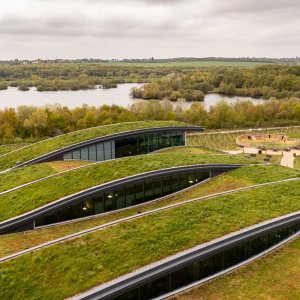The Need to Develop Storage Infrastructure in Mexico

STORY INLINE POST
Recently, upon the year end gathering of AMESPAC, Luis Vielma, its president and a good friend of mine, commented that, “The energy transition will not take just a couple of years, as the development of the oil and gas industry took some hundred years. This new energy disruption will take several decades, thus the crude oil and the hydrocarbons industry should remain active for at least 40 years.” In my curiosity, I found the brief and clear description Daniel Yergin makes of the different energy transitions our world has experienced, from wood to charcoal, to coal, to coke and to oil, which was discovered in 1859. It took a century for oil to take over coal as the best energy source. “As for natural gas, global consumption has increased 60% since 2000.” [1]
Today, the trending topic is the consideration of electricity as the next No. 1 source of energy. There are a good number of reasons why the energy transition has become part of our daily conversation, derived from a more extended awareness that the planet has been severely damaged by the greenhouse effect from the irrational burning of fossil fuels, and the resulting climate change with all its consequences: storms, droughts, forest fires and other catastrophes that are hitting every single corner of the world.
The energy transition suggests that by using clean means of producing energy, such as wind and solar, modern societies will move to electric means of transportation and a more ordered way of living, while also becoming more sensitive to avoid the massive consumption of our era. One of the statements that is often brought up in our conversations is about natural gas becoming the best vehicle to achieve an efficient energy transition.
In a recent article, Luis Vielma explains that natural gas (NG) is the mix of light hydrocarbons with neither color nor odor. That is basically methane and ethane and to a lesser extent propane, butane, and others. It is “rich” if the contents of heavier hydrocarbons is greater than methane, otherwise, it is called “dry gas.” Even though natural gas consists of water vapor and impurities like carbon dioxide, nitrogen, hydrogen and sulfur, when one compares it with other fossil fuels, it is cleaner and less polluting. [2]
Vielma’s approach to the need of adjusting the processes that PEMEX applies nowadays, for it to maximize NG and make it more valuable in the energy transition, points to finding better solutions through state-of-the-art technologies to mitigate practices of venting and burning gas in Mexico. This is an urgent priority if one wishes to accomplish the recently acquired commitment to reduce those practices by 2030 (zero emissions).
Some impacts of this new approach towards sustainable ways to generate energy have been felt in different areas of activity, including the financial world, where Banks and Investment Funds now focus new investments where the disclosure of climate related risks offer minimal environmental damage.
On the other hand, there are other opinions: according to Luca Ferrari, a researcher at the National Autonomous University of Mexico (UNAM), the energy transition is a fallacy, due to the impossibility of achieving the massive development of storage devices that would be required for an exponential extraction of key minerals like graphite, lithium, and cobalt, as well as copper, aluminum, nickel, and some rare earths. The deployment of all the needed machinery to mine said minerals, would be impossible without the use of fossil fuels. Thus, we come back to where we are now. [3]
The Energy Industries Council recently published its insight report on Carbon Capture, Utilization and Storage (CCUS), which reflects science’s efforts to help in the energy transition, due to its applicability across all emitting industries, and derived harmonies from technology in the oil and gas infrastructure and expertise. According to EIC, transition is a key term toward a more sustainable future, creating longevity in the oil and gas sector; also, it would be needed to accomplish regional and global net-zero goals to ensure a competitive and profitable market. [4]
Regardless of the way one would like to apprise such a transition, I thought this article should focus on a central idea: the survival of our potentialities to have a strong Mexico, through energy storage:
-
Hydrocarbons are essential for the development of industrial activities, as well as for households and the government.
-
It is an urgent need to develop the lacking infrastructure to guarantee access to gas, fossil fuels and even renewables. Probably, the means to assure availability is to store energy properly.
-
Not long ago, the former general director of CENAGAS started a well-structured route map with the aim of establishing a network of storage facilities through the conditioning of salt caverns and depleted oil wells; those efforts have been forgotten.
-
In November 2018, CENAGAS launched an open bid* to receive offers for the service of storing natural gas in several depleted oil fields; unfortunately, that bidding process could not be completed. [5]
-
-
Reviewing some of the vast literature, I read a statement that was encouraging at the time: “In 2020, Mexico will have more gas transport capacity than demand.” [6]
-
Although it was right at the time, nowadays, such capacity has been dealt by CFE with some of the most relevant private investors of the existing infrastructure of gas pipes and just at the end of November 2022, CFEnergy, a subsidiary of the national company CFE, launched a new bid to attract private investment for the development of infrastructure for liquifying gas and its commercialization in Coatzacoalcos, Veracruz. [7]
-
As far as I have searched, there appears to be only one company in Mexico that was conceived to make a business out of offering shelter to PEMEX’s LP gas in the salt caverns they have primarily for the ongoing concern of its salt business unit. I refer to Cydsa, a Mexican corporation that in its 2021 Annual Report depicted the achievements of the latest of its entrepreneurial efforts: to process, store and operate PEMEX’s liquified petroleum gas (LPG). [8]
Finally, I thought of presenting some additional proposals that could benefit our energy industries:
-
On the verge of the energy transition, it looks like the natural actions to follow should focus on the hydrocarbons exploitation where we are likely to find them; these efforts require both technology, and capital investment.
-
Provided PEMEX has neither of the above in excess, it should be logical to allow private oil and gas operators to complement those efforts; the continuity of bidding rounds could still echo within the Independent Oil Contractors (IOC).
-
Even though some countries and companies around the world have started implementing programs to reduce their carbon footprint, it is not a solution that would be achieved in the short term, thus, we are not too late to join those efforts wherever possible.
I highly recommend looking at the US and the EU, whose foresight and planning for storage practices have increased supply security through the years. [9]
References:
[1] The New Map by Daniel Yergin – Penguin Press, 2020 – Chapter 41.
[4] EIC CCUS insight report: December 2022.
[5] Licitación Pública Internacional Presencial - CENAGAS-ALM-001-2018
[8] Cydsa’s 2021 Annual Report
[9] https://energy.ec.europa.eu/role-gas-storage-internal-market-and-ensuring-security-supply_en
























